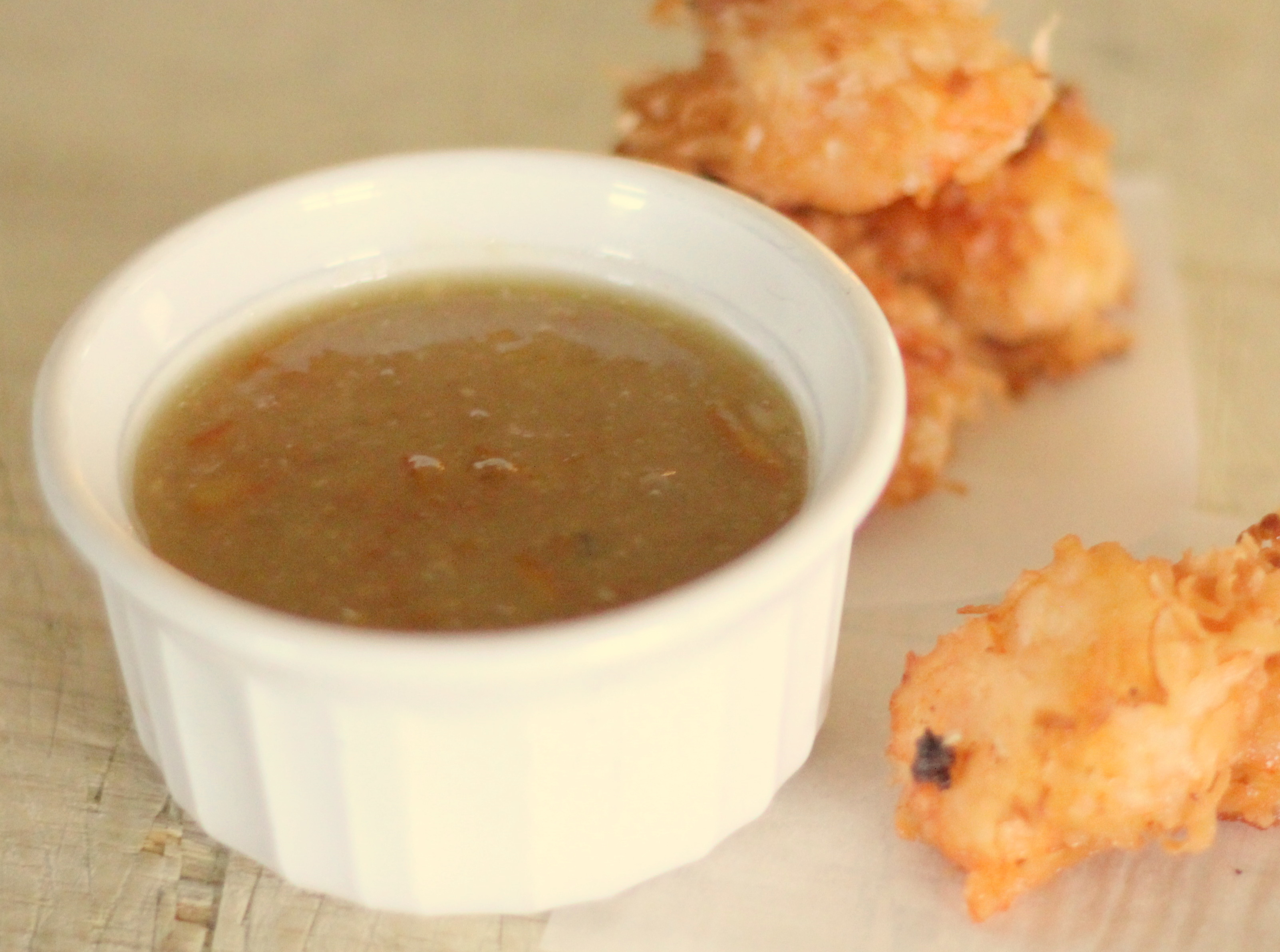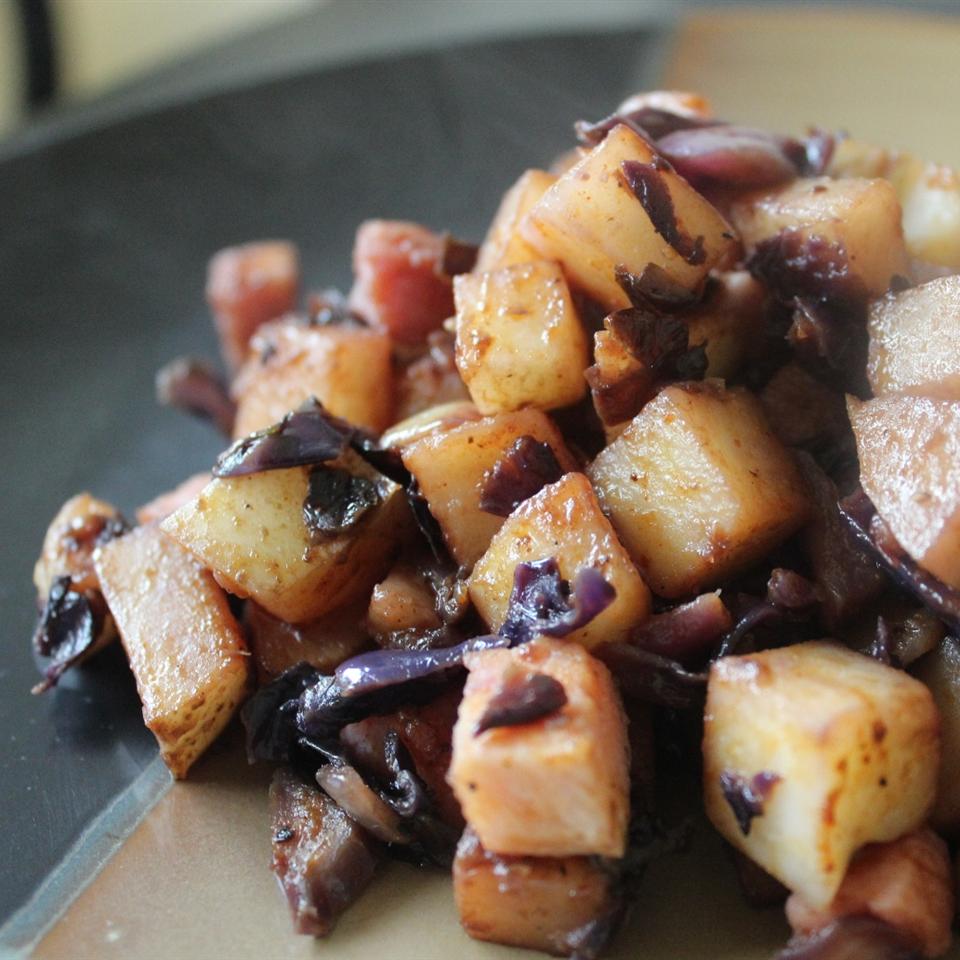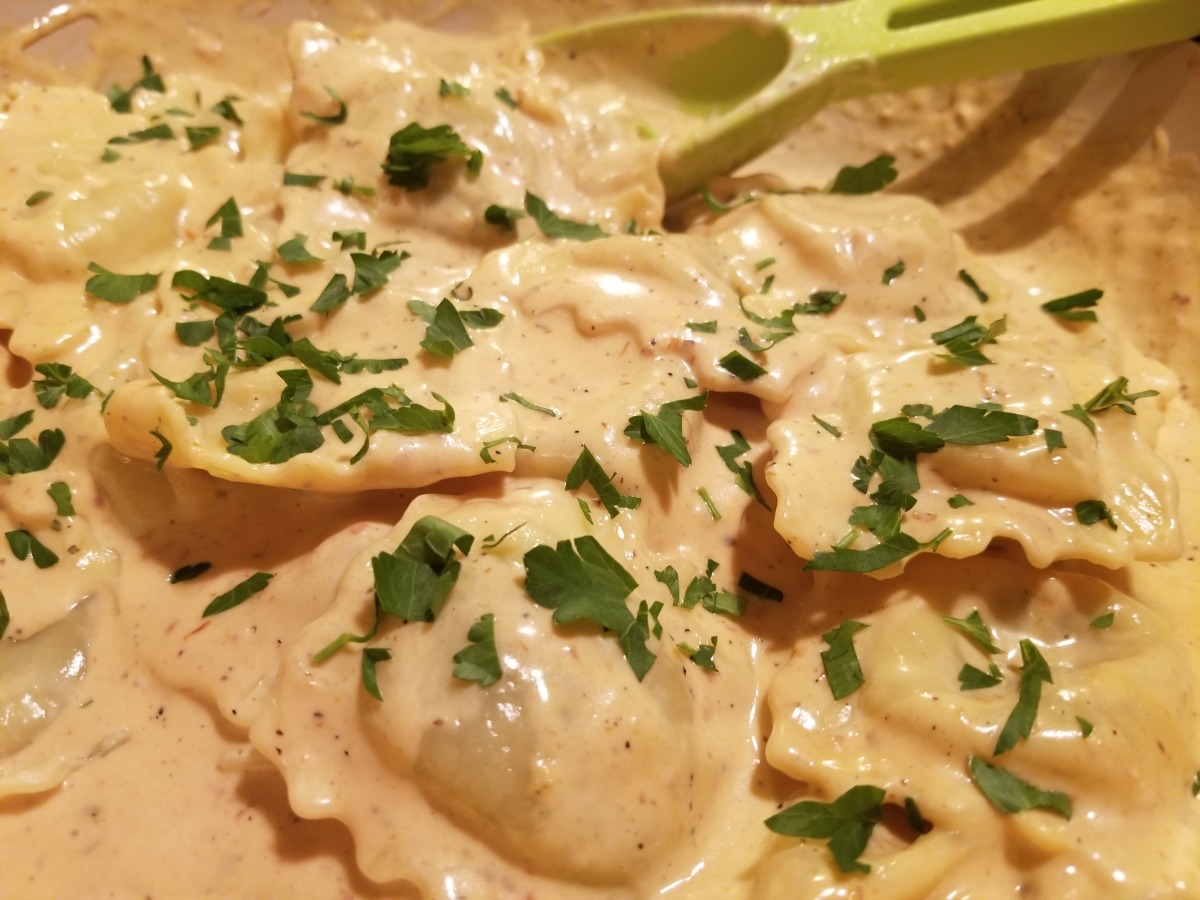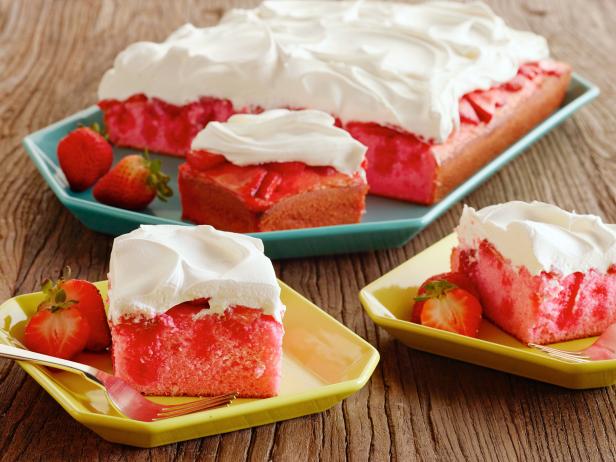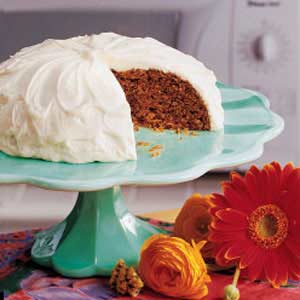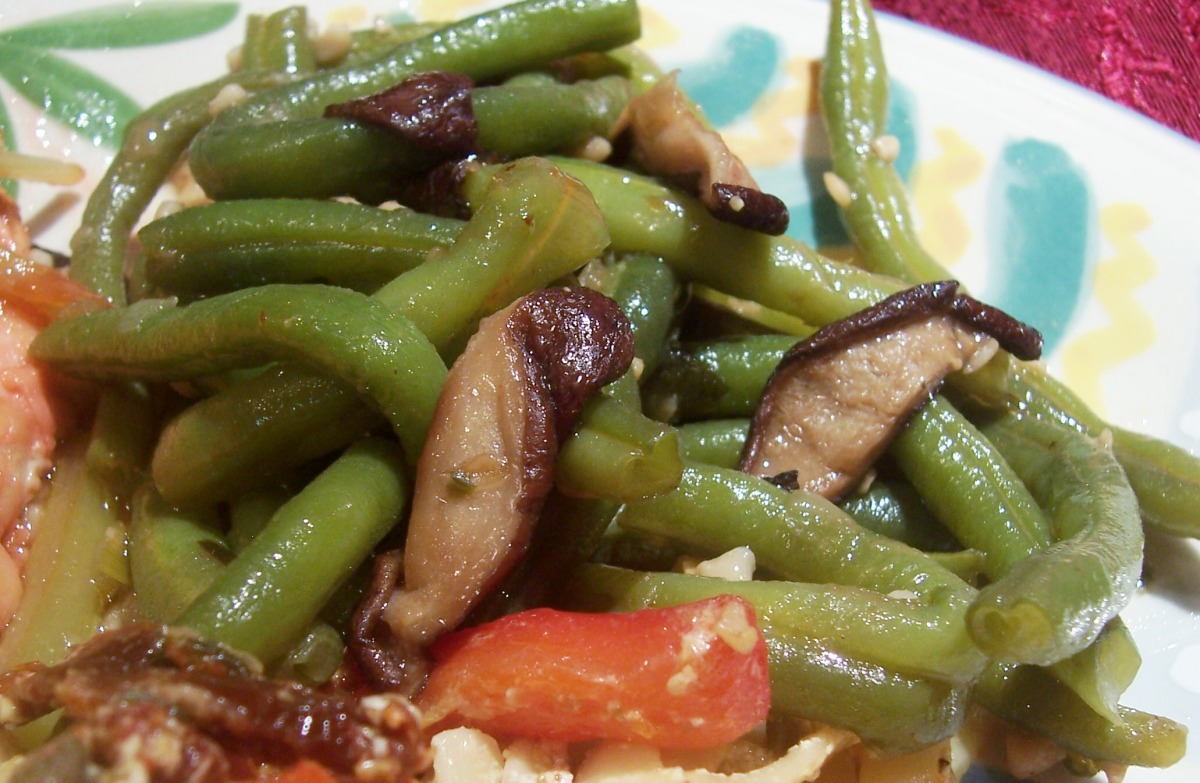**Ddeokgook (Korean New Year Rice Cake Soup): A Symbol of Prosperity and New Beginnings**
Ddeokgook, also known as Korean rice cake soup, is an iconic dish deeply ingrained in Korean culture. It is traditionally served on Seollal, the Korean New Year, symbolizing prosperity, good fortune, and new beginnings. This hearty and flavorful soup features soft and chewy rice cakes (ddeok) swimming in a savory broth made with beef, chicken, or anchovies. The addition of vegetables, such as radish, carrots, and scallions, adds color and texture to the dish, while a sprinkle of toasted sesame seeds and a drizzle of sesame oil impart a nutty aroma and rich flavor. Ddeokgook is not only a culinary delight but also carries significant cultural significance, representing the Korean people's resilience, perseverance, and hope for the future.
**Variations and Accompaniments:**
1. **Classic Beef Broth Ddeokgook:** This traditional version of ddeokgook features a flavorful broth made with beef bones, brisket, or chuck roast, simmered for hours to extract a rich and savory flavor.
2. **Chicken Broth Ddeokgook:** For a lighter and more delicate soup, chicken broth is used as the base, creating a clear and golden broth that complements the chewy rice cakes.
3. **Anchovy Broth Ddeokgook:** This variation utilizes anchovies and kelp to create a deeply flavorful and umami-rich broth, adding a distinct seafood essence to the soup.
4. **Vegetable Ddeokgook:** For a vegetarian or vegan take on ddeokgook, vegetable broth is used as the base, and a variety of vegetables, such as mushrooms, zucchini, and spinach, are added for texture and flavor.
**Essential Ingredients:**
1. **Rice Cakes (Ddeok):** The heart of ddeokgook, these soft and chewy rice cakes are made from glutinous rice flour and come in various shapes and sizes, depending on the region and preference.
2. **Broth:** Depending on the variation, the broth can be made with beef, chicken, anchovy, or vegetable stock.
3. **Vegetables:** Radish, carrots, and scallions are commonly used vegetables in ddeokgook, adding color, texture, and flavor to the soup.
4. **Seasonings:** Soy sauce, salt, and pepper are essential seasonings for ddeokgook, balancing the flavors of the broth and vegetables.
5. **Toppings:** Toasted sesame seeds and a drizzle of sesame oil are classic toppings for ddeokgook, adding a nutty aroma and rich flavor.
KOREAN RICE CAKE SOUP (DUK GUK)
Steps:
- Enjoy hot.
Nutrition Facts : Calories 494 kcal, Carbohydrate 93 g, Cholesterol 93 mg, Fiber 5 g, Protein 15 g, SaturatedFat 2 g, Sodium 1377 mg, Sugar 1 g, Fat 6 g, ServingSize 4 servings, UnsaturatedFat 0 g
DDEOK GOOK (KOREAN NEW YEAR RICE CAKE SOUP)

This is a traditional Lunar New Year dish in Korea. I have seen many different recipes - the only really standard ingredient seems to be the rice cakes -- but I really liked the savoriness of this one. The rice cakes in this soup are not the crispy American kind, but a firm Asian kind used in soups and other dishes. They are like Korean mochi, if that means anything to you. You could use beef broth instead of the anchovy broth if you prefer, although I don't think the anchovy broth really tastes fishy - it's more savory, in the way that Worcestershire sauce and Caesar salad dressing, both of which contain anchovy, are savory. Be careful eating the rice cake: it is so slippery it almost slides down your throat, but gooey enough that you really need to chew it. This is from koreankitchen.com, but I had to do a really specific search to find it, so I thought I'd post it to give it wider exposure, because it was good, and a new treat for me.
Provided by Nose5775
Categories Korean
Time 50m
Yield 2 serving(s)
Number Of Ingredients 12
Steps:
- Soak the rice cake in cold water for 30 minutes.
- Marinate the beef in the soy sauce, sesame oil, pepper, sugar, and minced garlic.
- Saute the beef in a skillet, then set aside.
- Put the 6 cups of water and the dried anchovies in a pot.
- Bring to a boil, then reduce to a simmer for 5 minutes.
- Strain out the anchovies and return the broth to the pot.
- Add the rice cakes to the broth.
- Bring to a boil, then reduce the heat to medium.
- Cook for 10-15 minutes, until tender.
- Add the green onions.
- Pour the egg in a little at a time.
- Let it set a bit, then stir- if you stir right after adding the egg, the broth gets milky.
- Put into bowls.
- Garnish each bowl with some beef and some crumbled kim.
KOREAN RICE CAKE SOUP (DUK GUK)
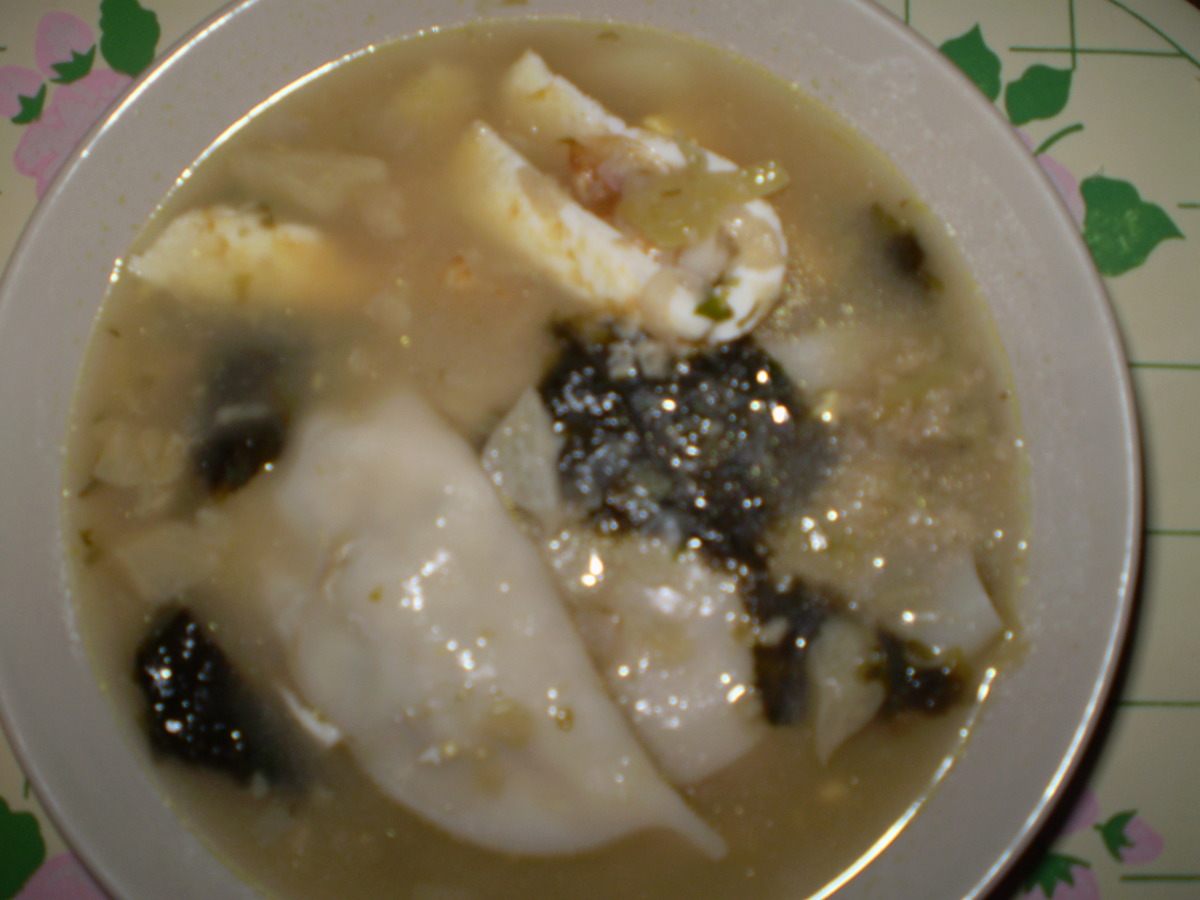
This is a delicious soup that Koreans serve at the New Year. You won't find these ingredients in your local groccery store, but an oriental market should have them. This soup is pretty easy, but looks beautiful when served.
Provided by Upsidedown Again
Categories Clear Soup
Time 20m
Yield 6 serving(s)
Number Of Ingredients 8
Steps:
- Bring broth to a boil.
- Add dashida and rice cakes.
- Boil until rice cakes are tender, about five minutes.
- Add green onion and cook for one minute. Remove from heat.
- Beat eggs and cook in a thin sheet. Cut into thin strips that are about two inches long.
- Cut beef into two-inch-long strips and brown.
- Boil dumplings until tender.
- For each bowl of soup: spoon soup into bowl and add desired toppings.
Nutrition Facts : Calories 679.3, Fat 17.5, SaturatedFat 6.2, Cholesterol 138.6, Sodium 1507.3, Carbohydrate 111.7, Fiber 6.1, Sugar 2.8, Protein 17.6
Tips:
- Use high-quality rice cakes for the best flavor and texture. Fresh or frozen rice cakes are ideal, but dried rice cakes can also be used if they are soaked in water for at least 30 minutes before cooking.
- For a richer broth, use a combination of beef and chicken broth. You can also add a splash of fish sauce or soy sauce for extra umami.
- Don't overcrowd the pot when cooking the rice cakes. They should be able to move around freely in the broth so that they can cook evenly.
- Add the vegetables and meat towards the end of the cooking time so that they don't overcook.
- Season the soup to taste with salt and pepper. You can also add a pinch of red pepper flakes for a little heat.
- Garnish the soup with green onions, sesame seeds, and a drizzle of sesame oil before serving.
Conclusion:
Ddeokguk is a delicious and hearty soup that is perfect for a cold winter day. It is also a traditional Korean dish that is often served on New Year's Day. With its simple ingredients and easy-to-follow instructions, this recipe is a great way to make ddeokguk at home. So gather your ingredients and give it a try!
Are you curently on diet or you just want to control your food's nutritions, ingredients? We will help you find recipes by cooking method, nutrition, ingredients...
Check it out »
You'll also love




/korean-rice-cake-soup-duk-gook-recipe-2118935-hero-01-184dfa2d315f448bb5e420a30aa2c829.jpg)
